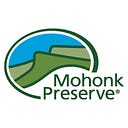Research Report #24 — Fish of the Northern Shawangunks
For many years scientists and naturalists have been studying and observing the flora and fauna of the Shawangunk Ridge. Foremost among them was Daniel Smiley, for whom Mohonk Preserve’s Daniel Smiley Research Center is named. Dan wrote numerous reports summarizing his observations on various topics. This regularly occurring series will feature some of these reports; some hold tremendous scientific value today and just await an interested researcher to follow up, others showcase a quirky sense of humor or highlight an oddity of nature.
Read the report: Fish of the Northern Shawangunks: Annotated Checklist. November, 1982. Paul Huth and Daniel Smiley.
A Note from Paul C. Huth, Director of Research Emeritus: Understanding the diversity of fish species in water resources can be very revealing. Fish, and a diversity of invertebrates, are excellent bioindicators of water quality. Game fish populations can also reveal anthropogenic impacts and changes in cultural history of an area over time.
In this 1982 Research Report we looked at available fish records for 15 water systems in the Shawangunk Mountains, including the five sky lakes, six streams, and four artificial ponds. Records included Mohonk Preserve Field Trip Reports, Research Associate Reports, and library resources housed in the Daniel Smiley Research Center Archives, including personal accounts of fishing, stocking, and state fish surveys. Fish species evidence dated from 1865 to 1982. We were fortunate in that the best and most detailed documentation of fish and fish stocking through the years was for Mohonk Lake and nearby. We also very much appreciated getting first hand accounts from local fishermen, ichthyologists, and historians. In all, we were able to document 22 species of fish.
It is likely, that since all five summit sky lakes are glacial in origin, and with waterfalls in their outlet streams, the presence of fish in all the lakes, documented by the 19th century, “is linked to human activity.” Species and populations changed and some fish species disappeared over time due to lack of sustainable food availability and water quality, particularity pH below that required for life and reproduction. By comparison, Mohonk Lake, because of its watershed geology and buffering capacity, maintaining a circumneutral pH year round, supported some 10 species of native and stocked fish. Of particular interest to the authors though, was the resulting documentation of a decline and loss of all fish from the southern four of the five Shawangunk sky lakes by the early 1920s. This, from further research, was the result of a combination of factors such as local air pollution, acidification, particular watershed geology with low buffering capacity, and fishing pressure from local residents.
In October 1931, Dan Smiley made the first pH readings of samples of Shawangunk waters. Those on the conglomerate substrate were very acid. Lake Awosting pH was an acidic 4.5. In the early 1970s, the first baseline of comprehensive water chemistry and pH determinations was made of selected Shawangunk waters, and of precipitation, by Mohonk Trust Research Associates from the United States Department of the Interior, Geological Survey. Precipitation sampling from September 1, 1973 to August 31, 1974, revealed a range of precipitation pH from a low of 3.65 to high of 4.70! Regular sampling and pH testing of each precipitation episode began at the Daniel Smiley Research Center in 1976 and continues today. Over the decades, annual pH averages of all storms have trended generally upward, first reaching over pH 5.0 in 2012.
The upward trend in annual precipitation pH has had direct influence on Shawangunk groundwater. Minnewaska Lake, which was fishless from about 1922, had recovered to the level where it supported the first reintroduced fish, Golden Shiners, in 2008. Only to be supplanted by Largemouth Bass in 2012. Continued changes in pH and biota are likely to continue there and elsewhere on the ridge. In nature, change is the rule. We will be watching.
Read the report: Fish of the Northern Shawangunks: Annotated Checklist. November, 1982. Paul Huth and Daniel Smiley.
